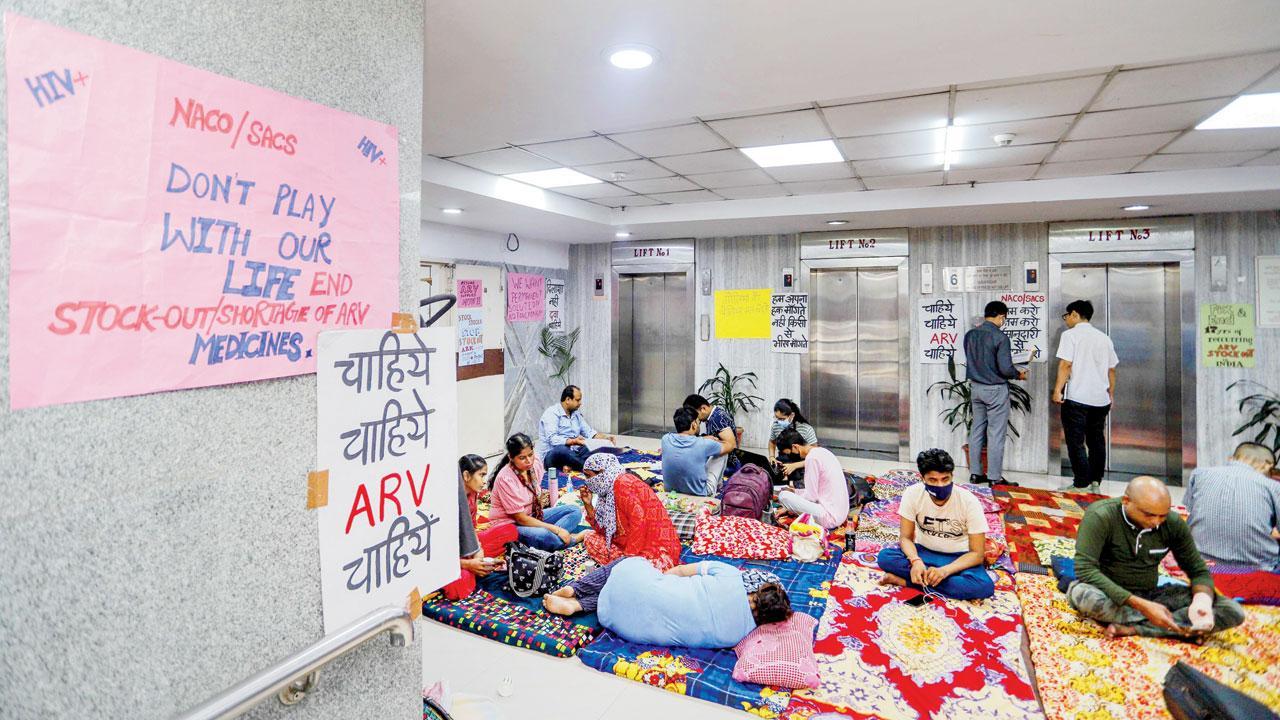Home / Sunday-mid-day / / Article /
‘I was put on HIV children’s meds due to shortage’
Updated On: 07 August, 2022 08:14 AM IST | Mumbai | Yusra Husain
A 53-year-old from Maharashtra is among thousands living with HIV whose lives have taken a turn for the worse thanks to a national drug crisis that could lead to long-term health complications

Activists and AIDS patients outside NACO’s Delhi office last week, where they have been on an indefinite protest since July 21 against the stock-out of HIV drugs since. Life-saving drugs for people living with HIV have been in short supply in the country since March this year. PIC/NISHAD ALAM
Nagpur resident Ashok* was diagnosed with HIV/AIDS back in 2006. The 53-year-old has been on the second line of treatment ever since; that’s one stage away from seeking the final line of treatment. For the longest time, he was receiving a cumulative stock of medicines that would last him three months from the Anti-Retroviral Therapy (ART) based in Mumbai, where he lived before the Covid-19 pandemic struck. Financial constraints forced him to return to Nagpur. Ashok was only just beginning to get his life back in order, when the shortage of HIV/AIDS drugs—Antiretroviral (ARV) drugs—that the country is currently reeling under, pulled the plug on his treatment.

AIDS patient and activist Ganesh Acharya waits at the ART centre situated in JJ hospital, Byculla



